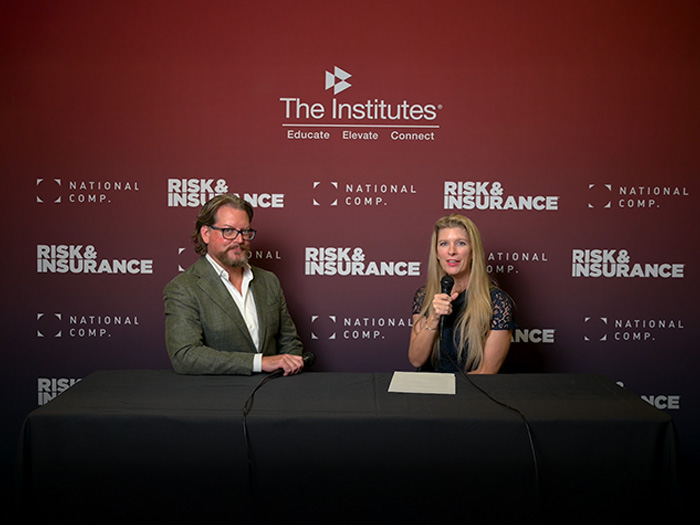Unveiling the Truth: The Future of Workplace Cannabis Testing

It’s been less than a decade since Colorado became the first U.S. state to legalize recreational marijuana. Today, it’s legal to consume in 25 U.S. states and territories, as well as in Washington, D.C. But in most of these regions, recreational cannabis use has been legal for less than five years.
 In other words, cannabis use is on the rise, but not enough time has passed for a clear consensus about testing to emerge, let alone a clear set of best practices.
In other words, cannabis use is on the rise, but not enough time has passed for a clear consensus about testing to emerge, let alone a clear set of best practices.
That’s not to mention the fact that the national Drug Enforcement Agency still considers marijuana a Schedule I drug.
As a result, many employers are still wondering whether (and how) they should test their employees for cannabis use.
At September’s National Comp in Las Vegas, Dr. John Anderson, chief medical officer at Concentra, and Mike Rhine, senior vice president and COO of onsites at Concentra, will present a seminar entitled “The Impact of Cannabis Legalization on Employee Safety and Workplace Drug Screening,” which will examine some of the factors that affect employers’ ability to put together a strong cannabis policy.
An Imperfect Comparison
For states where recreational cannabis use is legal, there’s a temptation to draw a comparison to alcohol — another legal intoxicant — at least as far as employer testing is concerned. And that comparison holds, to a point.
Like alcohol, cannabis can slow reaction times and impair judgment, which could present safety issues in the workplace.

Dr. John Anderson, chief medical officer, Concentra
“The use of marijuana will cause impairment in pretty much anybody at certain doses,” said Anderson. “Similar to alcohol, we know their response times will be impaired. They’ll decrease. We know that there can be issues with balance and neuromuscular control with marijuana, and that’s highly variable, depending on the individual, and depending on how much they imbibed.
“The reasonable thing for an employer to assume is that they are a risk factor if there’s any recent use at all, [of] either alcohol or marijuana. And then the same goes for opioids and benzodiazepines and other prescription drugs. We know that with impairment at certain levels, reaction times change and coordination is impaired.”
Even where safety is not a primary concern, cannabis intoxication can negatively affect performance and productivity. So as with alcohol, employers in most states who suspect their employees are under the influence of THC are within their rights to request a drug test.
But this is where the alcohol-cannabis comparison fails, when it comes to the practicalities.
There are simple ways to test for alcohol intoxication, like breathalyzers that can give a more or less accurate reading of blood alcohol content in real time. But currently, there is no test for cannabis intoxication that provides instant results.
Just as importantly, intoxication from both alcohol and cannabis tapers off a few hours after consumption, while someone who has recently sobered up from alcohol can accurately produce a negative test result.
Even someone who has completely sobered up from recent cannabis use may return a positive test result for days or weeks, at least using the testing technology that’s currently available.
“Right now, what is most common is saliva- or urine-based [testing],” said Rhine, “which is what is typically done post-accident, in combination with the breathalyzer for alcohol. But the problem is, marijuana could show up on a post-accident [test for] up to six weeks.”
Also, there’s typically a clear cutoff for determining alcohol intoxication — a blood alcohol content of more than 0.08% renders one too intoxicated to drive, for instance, and many employers have a zero-tolerance policy for alcohol that demands total sobriety during working hours.
But the ability to measure cannabis intoxication with this level of precision doesn’t exist; a test will return only a positive or negative result. The results are neither instantly available nor a clear reflection of the subject’s current level of sobriety.
“The difficulty when comparing alcohol to marijuana is that we don’t have a cutoff point that indicates when impairment begins in an individual,” Anderson said. “There’s no legally determined cutoff point, and the testing that we implement to determine whether or not marijuana is present in the system does not have any value for acute usage or recent usage, with the exception of newer technology coming forward.”
“Any employer who’s currently doing drug testing should not be doing so without a policy in place, and any that are not doing drug testing and have any level of risk or safety in their work environment should be doing drug testing.” — Dr. John Anderson, chief medical officer, Concentra
New Tools, New Policies
Once it arrives, that newer technology will allow employers to deploy cannabis policies in entirely different ways.
This summer, said Rhine, “the plan is to be able to launch [cannabis breathalyzer testing] on a collect-and-send basis, meaning you take a sample and the cartridge is sent to a lab.”
“Eventually — they’re still about a year out for finding the technology — they’ll be able to process the tests on site at their unit. So you could have one at your place of work and be able to test individuals before they go to a high-rise, or under reasonable suspicion, to make sure that they do not have recent use in their system,” he added.
But even when the technology to more accurately measure the recency of cannabis consumption becomes available, there’s still the question of what determines the threshold between sobriety and intoxication.
Because the THC levels detected may not be zero even when a subject is totally sober, employers can’t reasonably enforce a zero-tolerance policy that extends well into their employees’ off-hours.
“An employer’s policy needs to be linked to a level,” Anderson said. “Is it arbitrary? Perhaps. But they’ve drawn the line in the sand and they follow their administrative policy, which obviously should have been published to their employees so that they all know what the expectations are.”
Anderson continued: “With breathalyzer testing, you’re going to get a positive or a negative, and it’s going to relate to this a specific timeline of when the marijuana or THC was consumed.” A company’s cannabis policy “will have to reflect the limitations of the testing and the objectivity of the analysis, which is all on the laboratory and the science behind the technology.”
Then, of course, there’s the medical case for using cannabis, which may even apply to an employee’s working hours. Thus testing for cannabis intoxication faces many practical difficulties that don’t apply to testing for alcohol intoxication.
It’s no wonder, then, that so few employers have a cannabis testing policy in place: “The National Safety Council surveyed 500 employers, and 1,000 employees at those employers,” Rhine said, “and less than half of them even had a cannabis policy.”
Putting a Policy in Place
Quite apart from the limitations of technology, testing employees for cannabis use is not without its risks. Even when the technology to more accurately measure cannabis intoxication arrives — and it is coming — it still doesn’t make sense for a company to model its cannabis policy after alcohol policy.
“I think it is risky in some regards,” Rhine said, giving the hypothetical of a company that chooses to enforce a zero-tolerance cannabis policy and terminates an employee who tested positive for marijuana use despite not being intoxicated at the time it was administered.
“They’re going to lose a good employee for not a good reason … And so, that’s costly; it’s time-consuming; it’s a distraction from their business operations.”
That being said, the benefits of a cannabis testing program absolutely outweigh the costs for many employers. For one thing, testing improves the overall level of safety at a worksite, as evidenced by the rising rates of post-accident intoxication.
The positivity rate for post-accident marijuana testing rose 9% from 2021 to 2023, using the current testing methods available, Rhine said. Allowing intoxicated workers into a worksite where physical safety is an issue opens employers up to major liability.
“Any employer who’s currently doing drug testing should not be doing so without a policy in place,” Anderson said, “and any that are not doing drug testing and have any level of risk or safety in their work environment should be doing drug testing, and should also have that policy in place. Without that, there is a high level of exposure.”
But as Rhine explained, a good corporate cannabis policy should adhere first and foremost to all applicable laws, which may vary wildly from state to state: “You really have to do your due diligence and look at both state and federal law, if they both apply to you. We know state law will. And if you’re under some sort of federal supervision, then you have to consult both of them.”
“Any employer that’s going to develop a policy obviously needs to do it with their legal counsel taking the lead,” Anderson agreed.
The Bigger Picture
In fact, a good corporate cannabis policy should comprise at least three factors.
The first is testing. As mentioned, the utility of testing is somewhat constrained by the limits of current technology, but when it is used — whether that’s during pre-employment screening, following an on-site accident, randomly, or for cause or suspicion — it must in all cases adhere to state and national guidelines.
Employers will then need to determine an acceptable level of intoxication. As new technology makes it possible to issue breathalyzers to determine someone’s current level of cannabis intoxication, it will become possible to set some kind of cutoff — but for now, saliva and urine tests can’t distinguish between recent and chronic use, making zero-tolerance policies a delicate balancing act.

Mike Rhine, senior vice president, COO of offsites, Concentra
“As [cannabis testing] technology improves to the point of alcohol, you’ll be able to draw more objective lines in the sand, maybe, because you’ll have more data to use,” Rhine said. “And as the laws evolve, which we know will take years, some of the technology will as well.”
The second pillar of a strong cannabis policy is education. Not to be confused with the “Just Say No” campaigns of the Reagan era, a corporate cannabis education program should emphasize the known biological effects of cannabis intoxication — and the resulting safety risks — rather than the health effects of chronic use.
“They should be creating employer-specific education about cannabis and the impacts that it can have, and make it relatable to the job,” Rhine said. “They can draw that back to impairment and … what an accident can cause at their job site, and it then circles back into a culture of safety.”
That overall culture of safety is the third and, potentially, most important factor. Testing for cannabis use should be motivated by the push to reduce accidents and injuries, not by moral judgment.
The goal, Rhine said, should be to create “an open culture of safety that doesn’t punish [workers for saying] ‘Hey, I made a mistake’ or ‘I’m taking this for medical; I smoked this morning because I wasn’t feeling good and I’m feeling a little impaired.’ ”
Ideally, when a supervisor encounters this type of situation, “they send you home for the day,” Rhine said. “Every client can navigate it how they want, but whether it’s marijuana impairment, whether it’s feeling ill, or you wake up and you’re feeling dizzy — you still shouldn’t go up on a high-rise. You shouldn’t be doing construction.”
“It applies to anything — a culture of safety,” Rhine continued. “It doesn’t matter if it’s marijuana, alcohol, what have you. Ultimately, what this comes down to is that the person that’s impaired is either going to get hurt or they’re going to hurt somebody else … That’s what everybody’s trying to stop in our world.” &










